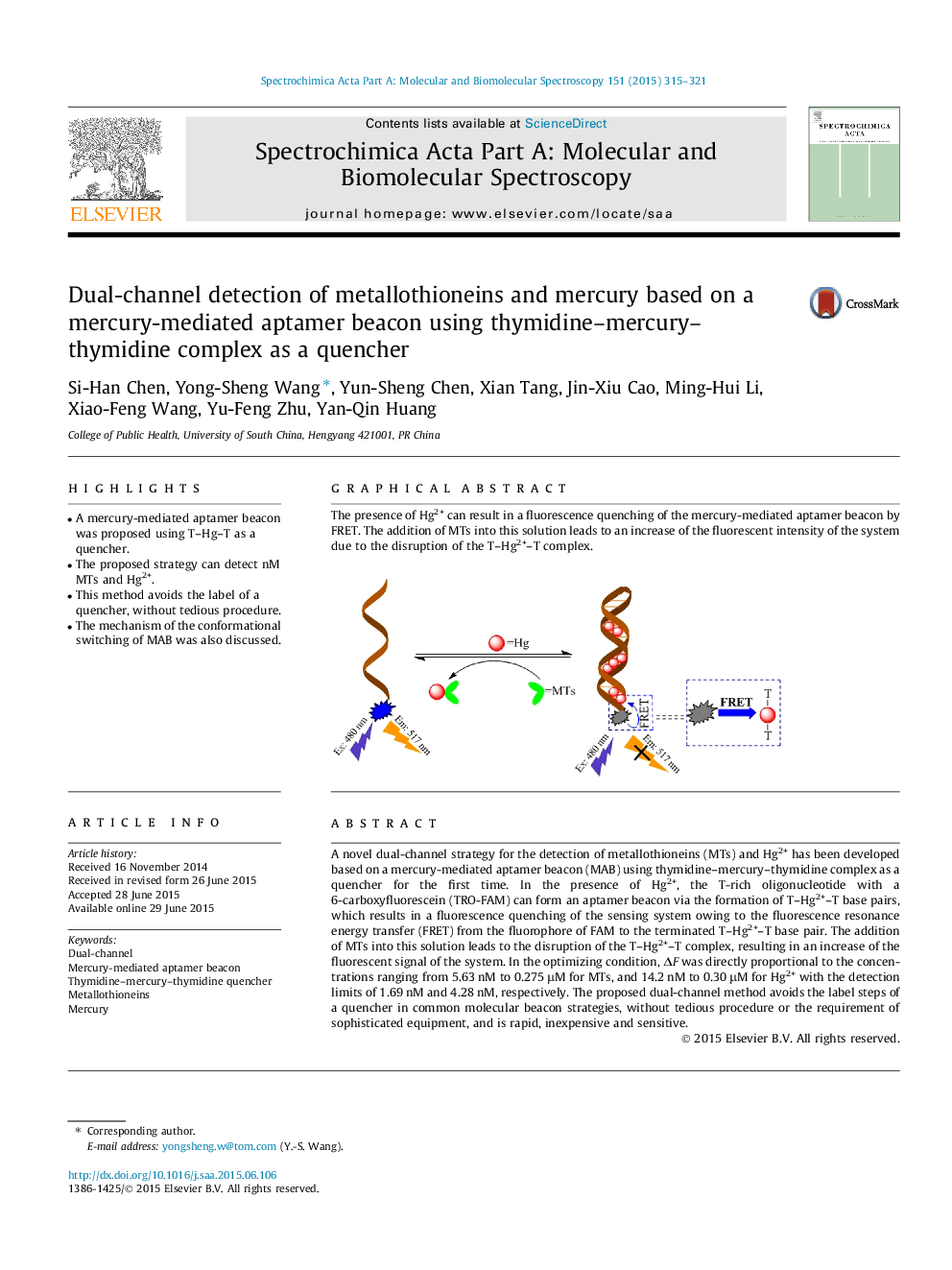| Article ID | Journal | Published Year | Pages | File Type |
|---|---|---|---|---|
| 1230085 | Spectrochimica Acta Part A: Molecular and Biomolecular Spectroscopy | 2015 | 7 Pages |
•A mercury-mediated aptamer beacon was proposed using T–Hg–T as a quencher.•The proposed strategy can detect nM MTs and Hg2+.•This method avoids the label of a quencher, without tedious procedure.•The mechanism of the conformational switching of MAB was also discussed.
A novel dual-channel strategy for the detection of metallothioneins (MTs) and Hg2+ has been developed based on a mercury-mediated aptamer beacon (MAB) using thymidine–mercury–thymidine complex as a quencher for the first time. In the presence of Hg2+, the T-rich oligonucleotide with a 6-carboxyfluorescein (TRO-FAM) can form an aptamer beacon via the formation of T–Hg2+–T base pairs, which results in a fluorescence quenching of the sensing system owing to the fluorescence resonance energy transfer (FRET) from the fluorophore of FAM to the terminated T–Hg2+–T base pair. The addition of MTs into this solution leads to the disruption of the T–Hg2+–T complex, resulting in an increase of the fluorescent signal of the system. In the optimizing condition, ΔF was directly proportional to the concentrations ranging from 5.63 nM to 0.275 μM for MTs, and 14.2 nM to 0.30 μM for Hg2+ with the detection limits of 1.69 nM and 4.28 nM, respectively. The proposed dual-channel method avoids the label steps of a quencher in common molecular beacon strategies, without tedious procedure or the requirement of sophisticated equipment, and is rapid, inexpensive and sensitive.
Graphical abstractThe presence of Hg2+ can result in a fluorescence quenching of the mercury-mediated aptamer beacon by FRET. The addition of MTs into this solution leads to an increase of the fluorescent intensity of the system due to the disruption of the T–Hg2+–T complex.Figure optionsDownload full-size imageDownload as PowerPoint slide
